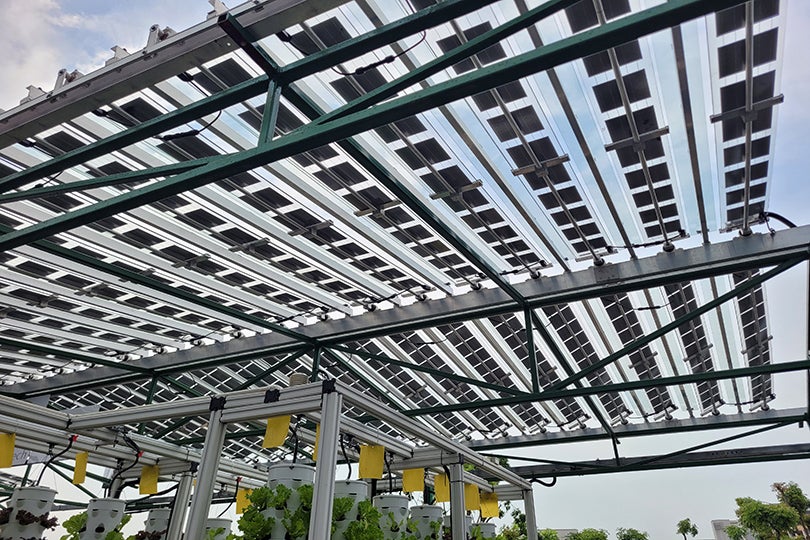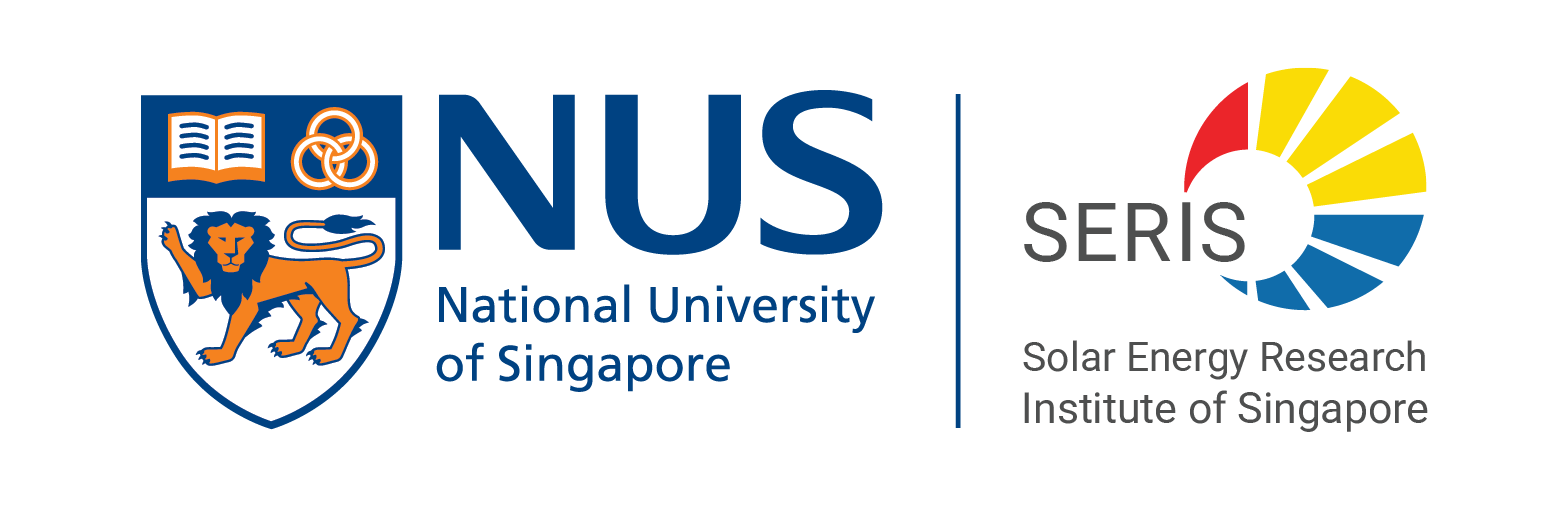SERIS has set up two testbeds at the Yuhua Agritech Solar (YAS) Living Lab for the combination of agriculture and PV power generation (also known as “Agrivoltaics”). The objective of this project is to design the Next Generation Solar & Agri-Tech (NGSAT) system which can balance crop yield, energy generation & energy consumption in an urban farming set-up while minimising waste. The system includes special features with various sensors which are the basis for developing a self-learning algorithm that will allow to fully automate future agrivoltaic systems. Please see page 76 for more details on this project.
For the testbeds, SERIS has designed a unique type of PV module which mimics rotatable louvers to track the Sun during the day to maximise solar energy generation but also to manage and possibly harvest rainwater. With this innovation, the traditional meshes used in outdoor farms can likely be replaced by rotatable PV modules which then provide both shading and power generation. Numerous sensors have been deployed in the testbed, which are described in more detail below.
• Meteorological data such as irradiance measured with different devices and at different inclinations, temperatures (module,
ambient), relative humidity, and wind speed/direction are collected in 1-minute time resolution. These data are used to evaluate
the energy yield of the testbeds, and also as input parameters to the self-learning algorithm which then sends signals to the stepper
motor to move the rotatable solar panels in real-time.
• Various DC and AC parameters of the two PV systems are collected from inverters and the energy meters to evaluate the net
energy consumption of the testbeds.
• Geolocation and date-time data are used to calculate the default Sun angle at different times of the year during the day and the
developed algorithm uses this information to set the position of the rotatable solar modules to track the Sun for maximised solar
power generation, unless other signals (e.g. heavy rainfall, insufficient light for the plants) suggest other positions.
• pH level sensors, water temperature sensors, humidity sensors, IEC (integrated electric conductor) sensors, and PAR
(photosynthetically active radiation) sensors on the growing area for optimum growth and nutrient control of the plants.
• Proximity sensors at each rotating PV module are deployed to prevent overturning of the gear beyond its start and stop positions.
To avoid drifts, the default positions are automatically calibrated every night.
The automated operations and remote monitoring & control are implemented in a cloud-based platform using software designed in
LabVIEW. The activities and measurements are displayed in numerical and graphical form in SERIS’ PV System Monitoring Lab,
providing visualisation of the PV energy generation and plant health in real-time as well as triggering alarms in case of emergencies.

For further information, please contact:
SOE Pyae
Team Leader, PV Monitoring
Digitisation of Energy Group
Solar Energy Systems Cluster

